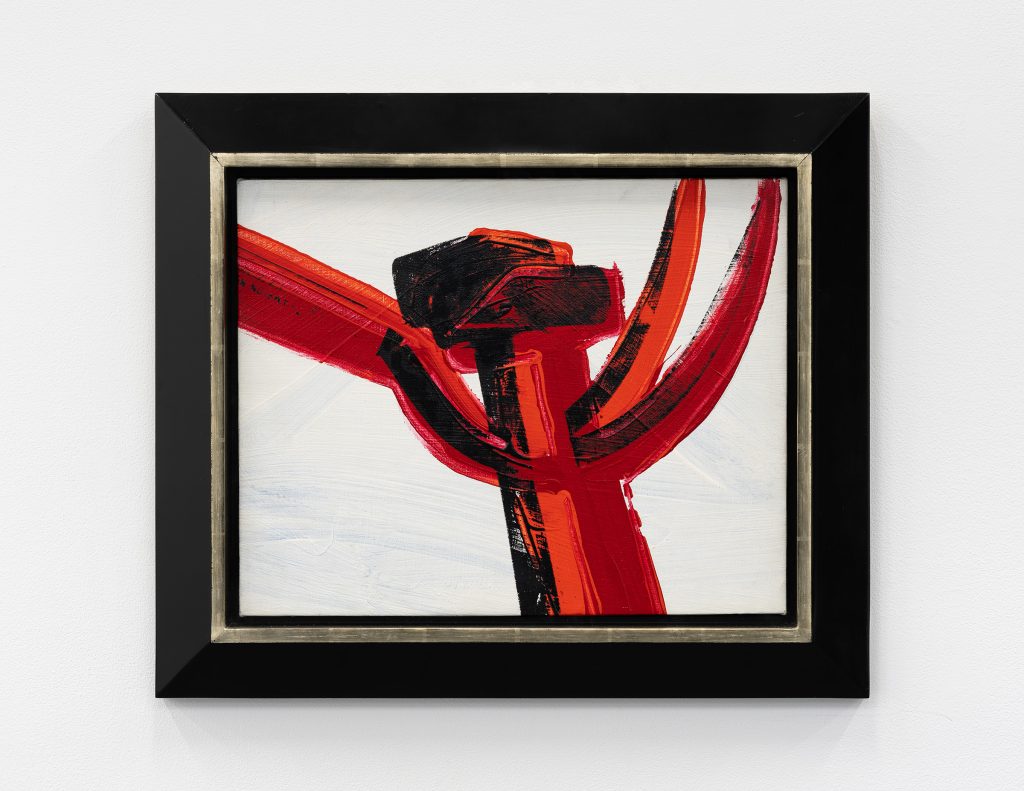
Contributed by Jacob Patrick Brooks / Images are everywhere. This simple (perhaps obvious) fact is driven home in various ways all the time. Most often in NPR bullet points indicating how many images the average person consumes daily. The number is often greeted with dull terror. Yet images are so prevalent that they disappear, coating the world in an invisible film. This dual quality of ubiquity and invisibility is what makes images such an attractive and important subject for artists to tackle. The current show at Miguel Abreu is kind of a who’s who of artists who study images and their rhythm.
Walking into the gallery, you first encounter Andy Warhol’s Hammer & Sickle from 1977. Anxiety and skepticism about both American and Soviet ideology is palpable. Warhol does his best to take this tension and drain in. The piece is small, just 18 x 14 inches, crowding the frame. It’s cropped and twisted right, planting the handles of the hammer firmly at the bottom of the surface. The twin shafts sit inside two sickles like a pair of scissors, about to cut the thick red trunks. The doubled tools and white wash around them suggest multiple attempts – as if he couldn’t quite get it right – though this display of vulnerability may be part of his schtick.
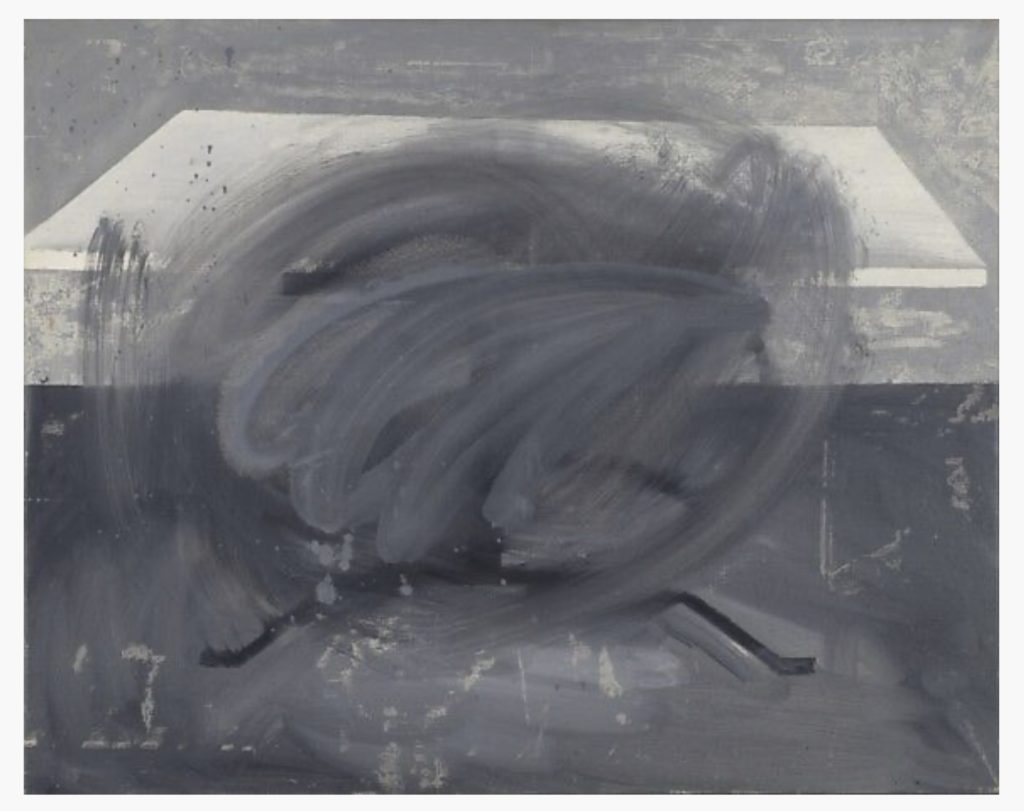
Except for the Warhol, a book of his hammer-and-sickles, Jennifer Bornstein’s photograph of a Gerhard Richter work, and a looping excerpt of a Godard film, the hallway leading to the rest of the show is empty.
The work is thoughtfully installed, facilitating conversations worth having. Scott Lyall’s Talent 55 is mirror-like, but gold and with a translucent reflection. You can see yourself, just as a stripped-down blob. It brings to mind the 2006 Time Person of the Year cover that crowned “You” as the titular recipient. Across the room is Blake Rayne’s Skull Ayre, depicting a giant ape skull with a golden implant over the face. What looks like a photograph from across the room degrades into pixels when you approach. Lyall may not care what position viewers take in relation to his piece, Rayne exerts control when it comes to how you perceive his.
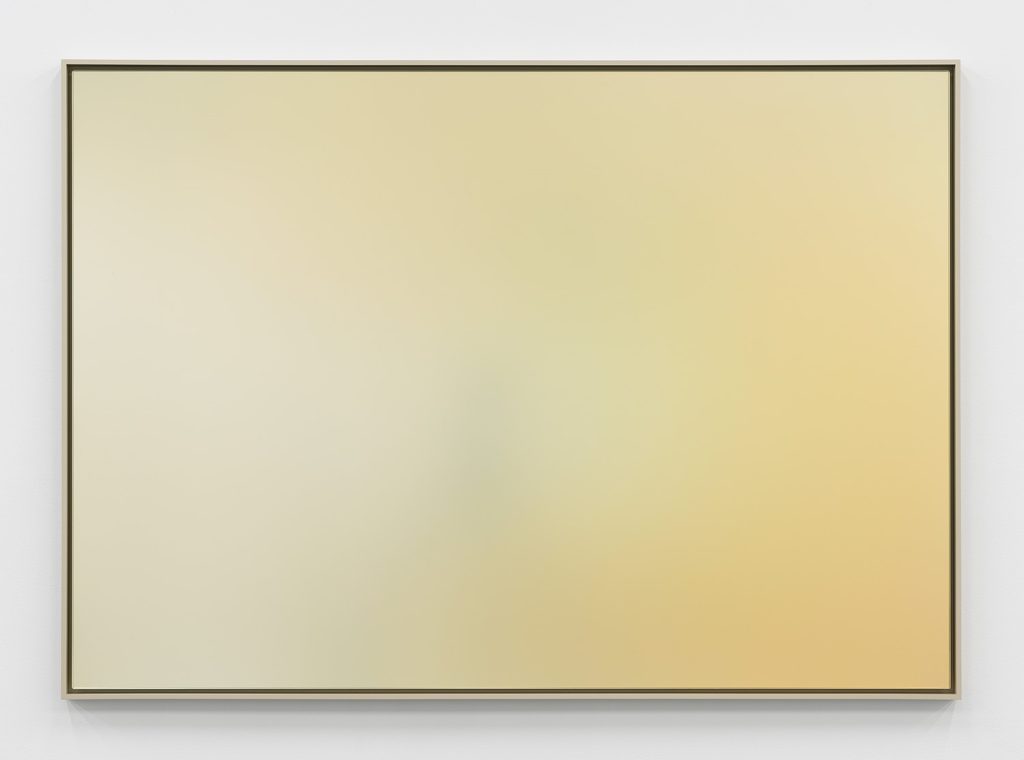
In the same room is Helen Marten’s sequential work The Almost Horse (U&H). The paintings excerpted from a series covering the alphabet. They resemble pages of a children’s book and include different arrangements of falling leaves. Both pieces have bronze frogs, H’s a cream-colored one and U’s a rusty orange. U’s palette is backyard at sunset, H is midday. The two pieces provide different points of view on the same scene, as if you placed a diorama on a lazy susan and spun it. U gives us a side view of a thick flower and fence that look like an orange splotch and expressive linework in H. The children’s book genre has expanded to accommodate ever-increasing lifestyle niches, which The Almost Horse seems to acknowledge and operate within comfortably. In the context of the other work in the room, notably Quaytman’s and Guyton’s, the decision to excerpt Marten’s larger body of work signals a dedication by the curator to appropriation and seeing how work can shift in different contexts.
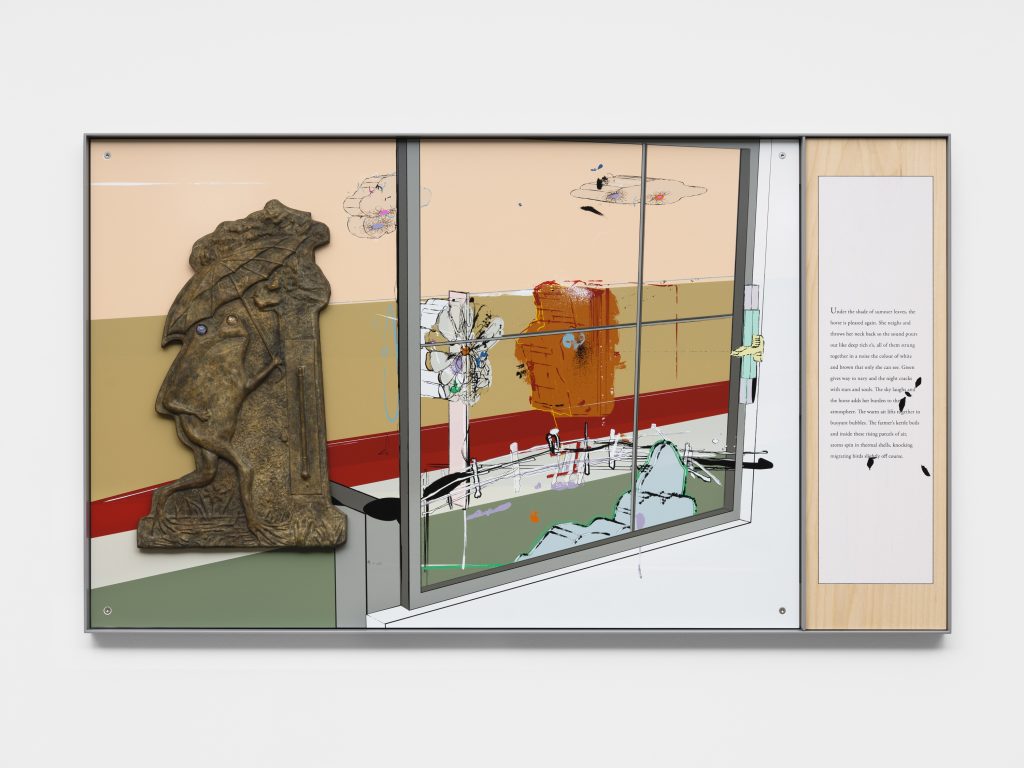
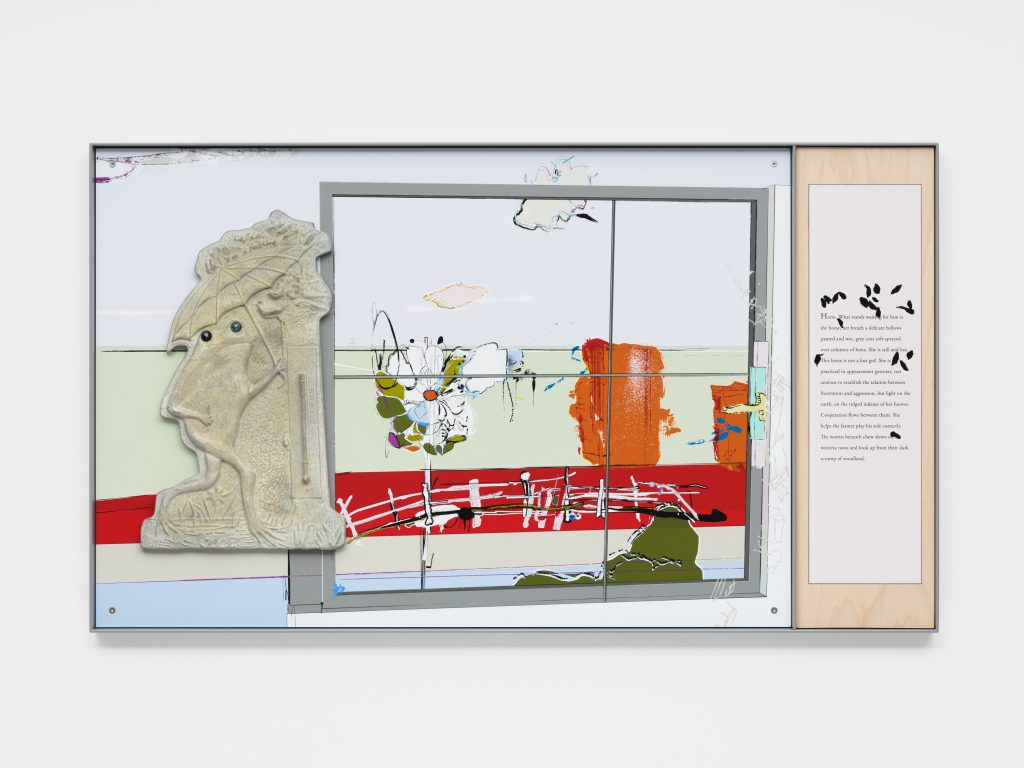
Eventually you are confronted with Richard Prince’s Untitled (The Band) from 2013. Prince is hit or miss for me, and this is a definite miss. It feels like a toy (comes with REAL gravel) and the photo of the Allman Brothers Band seems more drunk-uncle than masculine Americana, even if the difference between the two is razor thin. Catty-corner is Kate Mosher Hall’s Push. The image is blown out, making it difficult to tell what, if anything, is being happening. There’s a vertical figure-like totem in the right third, anchoring the image. The left has three light horizontal bands that are clearly something, but the distortion makes what difficult to work out. Yet the clash between Prince’s clarity and Hall’s lack of it is engaging and productive. Prince’s dedication to doing-it-because-I-can feels cheap and stupid next to Hall’s fastidious withholding. By the same token, Prince’s work provides a frame of reference for Hall’s dedication to giving us nothing.
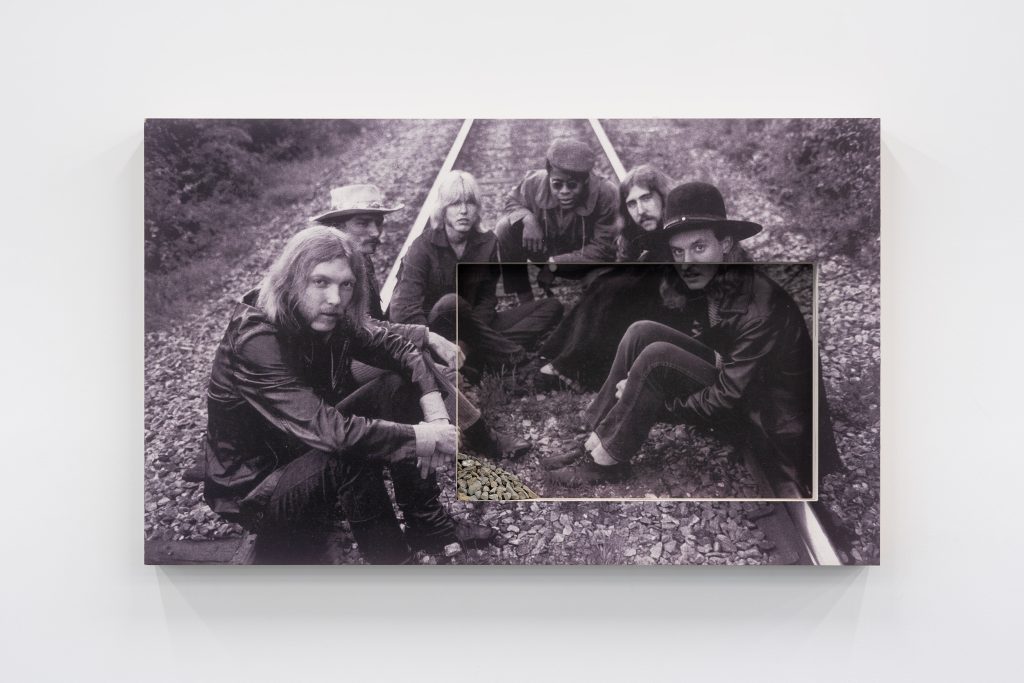
The white cube is the Cadillac of viewing images. Roomy and luxurious, it affords us the time and space needed to digest the work on display. It is a self-conscious refuge from the cacophony outside the walls. “When Image Processing Became Painting” goes a step farther in illuminating the gap between the gallery and everyday life, which makes the show as frustrating as it is successful. The world outside the gallery is a morass of images often untethered from context or meaning. Their surfaces collide and overlap. The relentless onslaught of images alienates and numbs us.

This show is rife with artists reveling in their ability to produce and to see what machines can do to their images, especially if those images are documentation of their production. It’s an ouroboros of making, so mundane it gives me vertigo. For the most part, it surveys yesterday’s solutions for the problems presented by an ever accelerating flow of images that were always meant to be disposable. Hoping that someone with technology and a bad attitude could preserve the sanctity of an original image, even if taken from another source. If self-surveillance and experimenting with machines have gotten us this far, our development now feels arrested. They no longer seem to cut it. Artists and mass media have been in a kind of arms race for decades. As the press release accurately assesses and the show itself affirms, a key task for the artists of tomorrow is to navigate this sea of images we find ourselves lost in.
“When Image Processing Became Painting,” Miguel Abreu Gallery, 88 Eldridge Street, New York, NY. Artists:Alex Carver, Charles Gaines, Jean-Luc Godard, Wade Guyton, Kate Mosher Hall, Tishan Hsu, Scott Lyall, Helen Marten, Richard Prince, R. H. Quaytman, Raha Raissnia, Blake Rayne, Cheyney Thompson, Andy Warhol. Through March 8, 2024.
About the author: Jacob Patrick Brooks is an artist and writer from Kansas living in New York.

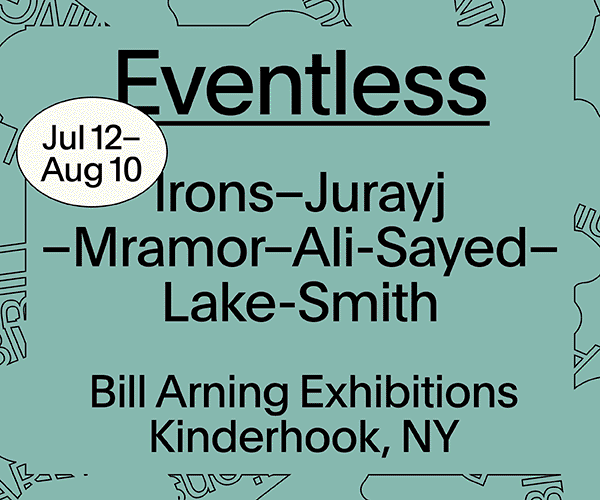
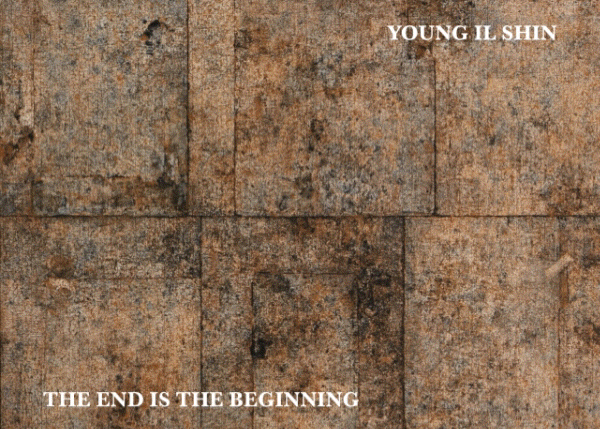
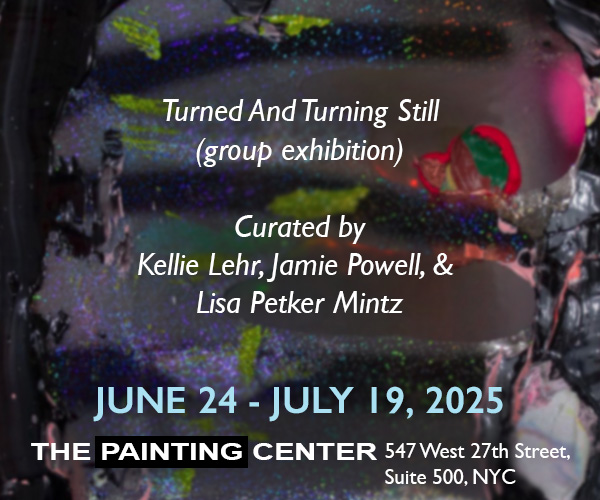
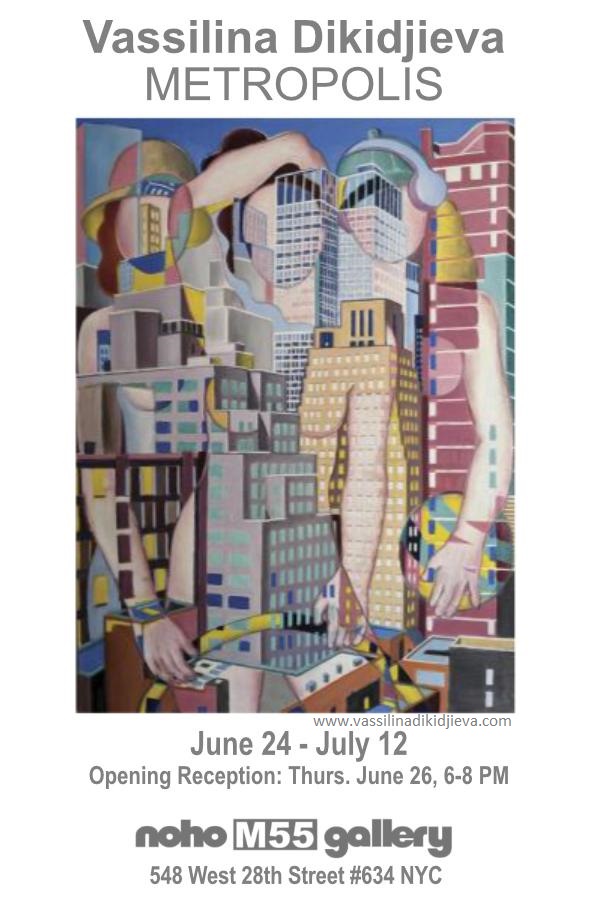
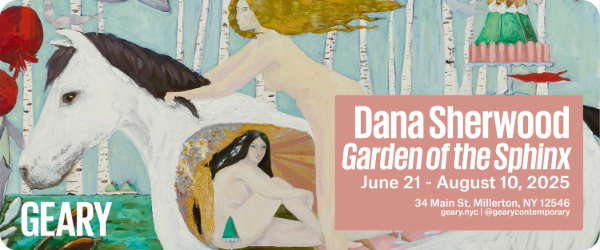










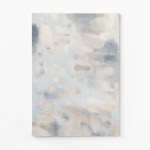
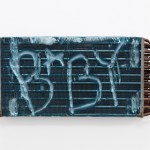
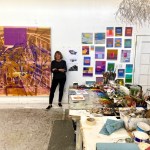
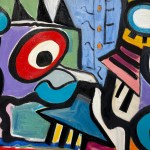
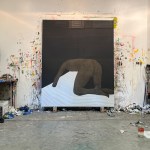
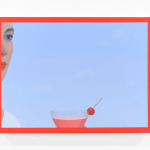
What a great article. Thank you! Extremely thought provoking.